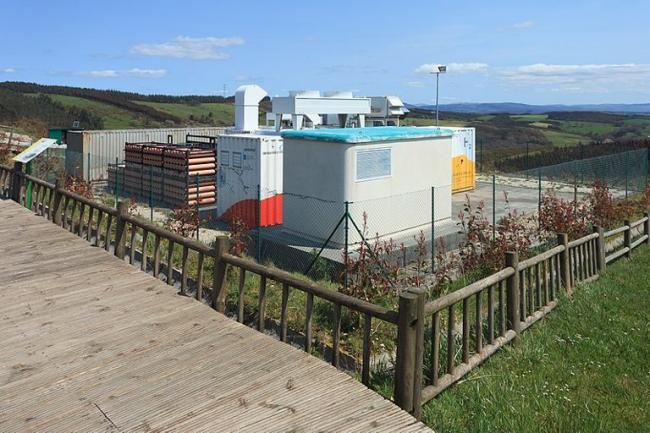Articles Menu

Aug. 20, 2023
Just when you thought the hydrogen economy zombie was dead and gone, it rises again, this time in color.
Yes, hydrogen comes in many colors these days: green, blue, gray and now white. No, these are not literal colors, but rather marketing tools designed to convince investors, policymakers (think: public subsidies), and the public (think: support of public subsidies) that the hydrogen economy is right around the corner and will be a key to addressing climate change. When burned, of course, hydrogen combines with oxygen to produce water. When manufactured, however, the process can produce a little or a lot of carbon dioxide depending how the manufacturing is done and whether fossil fuels are used as feedstocks.
Periodically, hydrogen advocates create a boomlet in media coverage to announce the coming of the hydrogen economy that never seems to arrive.
White hydrogen is the newest hydrogen media boomlet. It denotes hydrogen occurring naturally in reservoirs in the Earth’s crust as a free gas not combined with other elements. Its presence has been known for a long time. But no one believed the reservoirs were numerous enough or large enough to bother extracting. That thinking has changed, and there are now companies actively prospecting for underground hydrogen reservoirs.
The trouble is that even if white hydrogen turns out to be plentiful (which is a big if), it will be energy-intensive to extract, store and transport. In reservoirs hydrogen is often mixed with other gases from which it must be separated. And, it is also sometimes found dissolved in liquid and so must be extracted from the liquid after that liquid is pumped to the surface. What will the cost of getting at the pure hydrogen gas be? No one knows for sure because reservoir extraction has never been done on a large scale. Separating hydrogen from other gases would likely be done by liquefying the gases at very low temperatures and then distilling off each one. This is extremely energy-intensive.
Then there is the problem of storage and transport. As one analysis points out, it would take 14 tanker trucks of compressed or liquefied hydrogen to equal the energy content of one tanker of gasoline. And since hydrogen is the smallest molecule in the universe, it leaks from practically anything it is stored in.
There is little understanding of how much hydrogen would leak in a pipeline or tanker truck environment. Two scientists interviewed by Reuters suggested that leak rates of 10 percent over the life cycle of hydrogen (extraction, storage, transport and use) would negate any climate benefit because hydrogen gas “reduces the concentration of molecules that destroy the greenhouse gases already there [in the atmosphere], potentially contributing to global warming.” In short, the further a hydrogen reservoir is from the ultimate users of hydrogen, the greater the potential for leakage and therefore 1) the less likely its use would be a plus for climate stability and 2) the greater its energy requirement would be for compression and/or liquefaction.
For all these reasons, most of the hydrogen in use today is made on the site where it is used, mostly in the oil, chemical and fertilizer industries. And, the vast majority, 98 percent, is made from fossil fuels. This is so-called gray hydrogen. (The most common process for obtaining hydrogen from fossil fuels is called steam-methane reforming. For the uninitiated, the formula for the methane molecule is CH4. Methane is the major component of natural gas and thus is readily obtained and, at least for now, a relatively low-cost feedstock.)
So-called green hydrogen (currently under 1 percent of total supply) is generated using electricity from renewable energy sources to separate hydrogen from oxygen in water molecules through a process called electrolysis. Green hydrogen actually takes more energy to produce than is released when the hydrogen is burned. That makes green hydrogen an energy carrier, not an energy source.
Blue hydrogen must be placed right alongside “clean coal.” Like “clean coal” it involves a promise to sequester underground the carbon emissions from hydrogen made from fossil fuels. The carbon sequestration ploy is what an environmental writer I know calls the “delay and fail strategy.” The industry promises to perfect carbon sequestration over time. And, on the way to failing the industry builds a very profitable infrastructure spewing enormous carbon emissions into the air. When the jig is finally up, the industry can claim it tried. But investment that could have gone into cleaner alternatives has been squandered to enrich the fossil fuel industry and further entrench its hold on society.
Some sources are touting white hydrogen supplies as “virtually unlimited.” Whatever the supply may ultimately be, white hydrogen will be like every other underground resource, limited. There will be easy-to-get resources and these will come to be known as the “sweet spots.” And, there will be hard-to-get resources, generally too expensive to bother with. And the hard-to-get hydrogen will constitute the vast majority of resources identified.
What the hydrogen enthusiasts are counting on is the ignorance of the public and policymakers about the limits that will dictate hydrogen’s role in the energy economy. For now the enthusiasts seem to have the upper hand.
Kurt Cobb is a freelance writer and communications consultant who writes frequently about energy and environment. His work has appeared in The Christian Science Monitor, Common Dreams, Le Monde Diplomatique, Oilprice.com, OilVoice, TalkMarkets, Investing.com, Business Insider and many other places. He is the author of an oil-themed novel entitled Prelude and has a widely followed blog called... Read more.